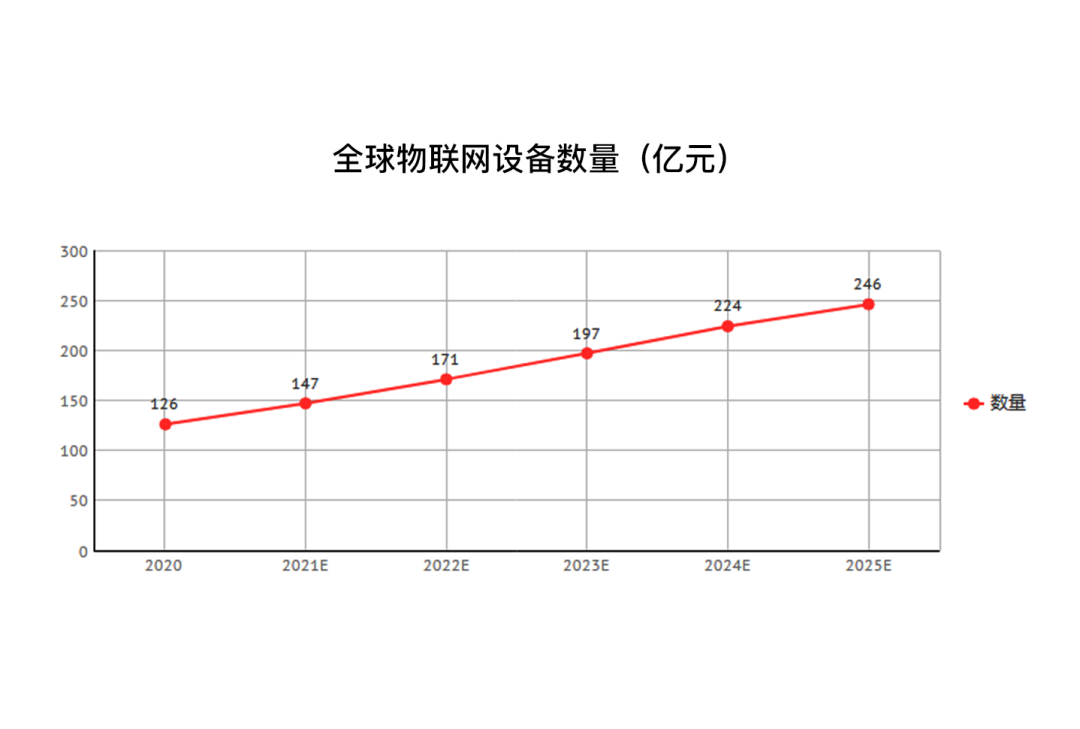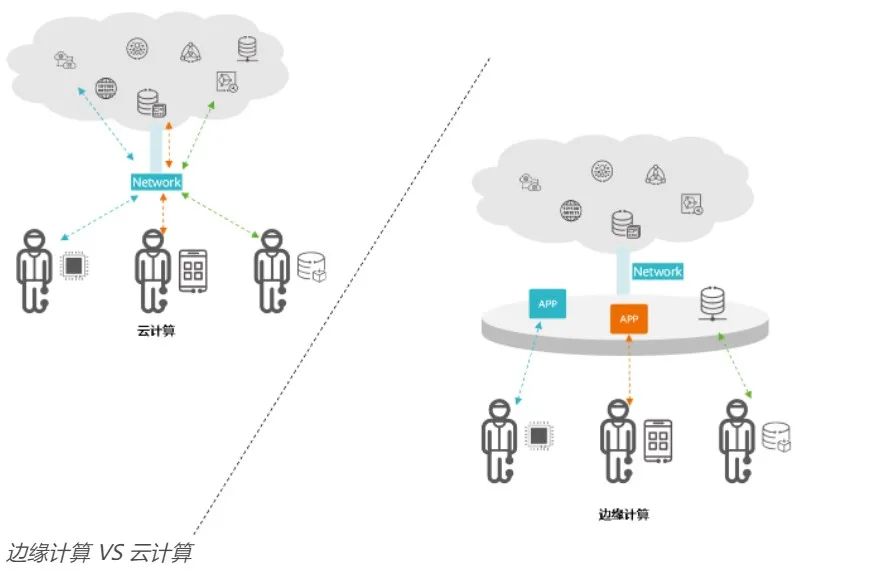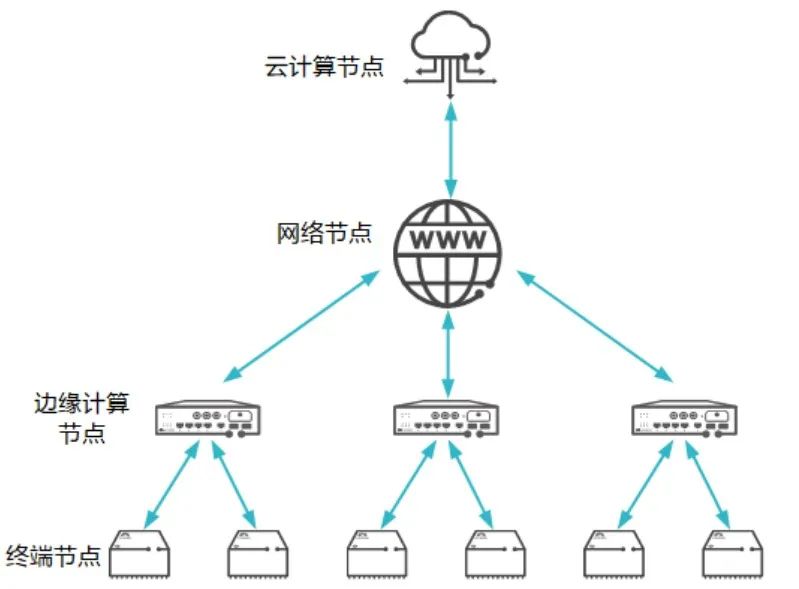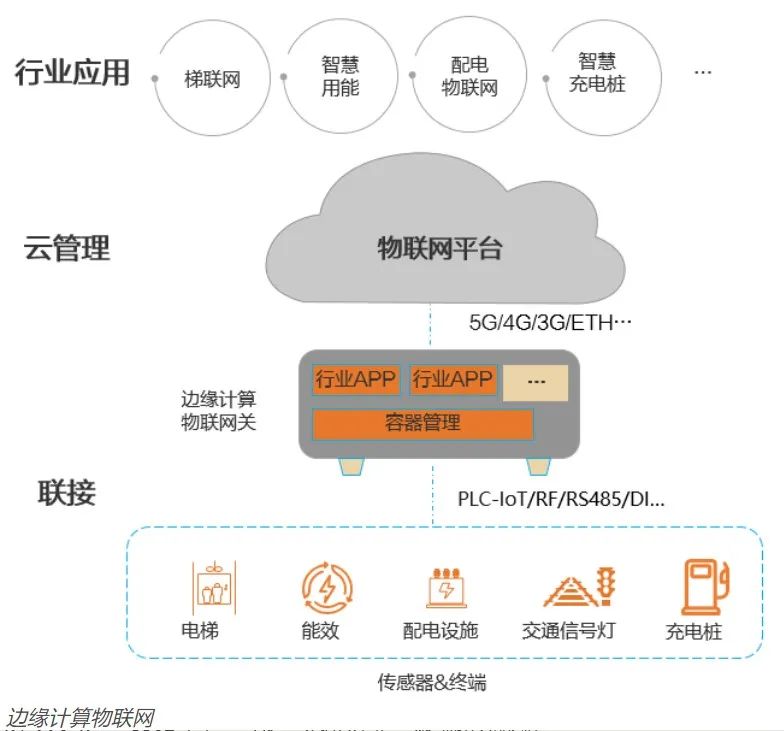
The Internet of Things (IoT) has pushed the edge computing theory, which has been dormant for decades, to the forefront of the market. It is the neuron theory that brings CPUs into the NPU era, empowering local learning capabilities, computing power, and decision-making intelligence, forming a new domain of edge intelligence. Edge computing is an extension of distributed computing in mathematics and local computing in computer theory. Now, the IoT refers to it as edge computing, but a more accurate term is endpoint computing, contrasting with cloud computing.
Edge computing is an organic combination with cloud computing and is not meant to replace cloud services. From the perspective of network topology, edge intelligence refers to the advanced data analysis, situational awareness, real-time decision-making, self-organization, and collaboration services provided by edge nodes on the edge side. From a system dimension, edge intelligence is about pushing the capabilities of the cloud down to the device terminal, creating a micro-platform that integrates networking, computing, storage, and applications at the terminal to process the data generated by edge devices more efficiently.
The “Electronic Sentinel” is the most successful application of cloud-edge computing at scale, where property management processes data from buildings in the community in real-time and periodically uploads it to the cloud for analysis and decision-making by the national big data cloud. Whether in consumer or industrial applications, the IoT is becoming increasingly intelligent. The reason behind this is the synergy between edge computing and the IoT, which constitutes edge intelligence. Edge intelligence is the future of computing, processing, and storage. Although this technology is still in its infancy, it is developing rapidly. According to Gartner, as of 2018, about 10% of enterprise data was generated and processed at the “edge,” and this figure is expected to reach a staggering 75% by 2025. It is also predicted that in the next 3-5 years, edge computing will become the next blue ocean market worth hundreds of billions.
Edge AI mainly refers to processing artificial intelligence algorithms on user devices. Edge intelligence relies on the hardware of the devices themselves to process data and processes related to machine learning and deep learning. It brings three benefits: first, it reduces latency to improve user experience; second, it reduces necessary bandwidth, thereby lowering the cost of internet services; third, it enhances data security and privacy.
IDC predicts that by 2025, there will be 41.4 billion IoT devices globally, generating 73147EB of data, of which about a quarter will be generated in real-time. Processing and AI analysis of this data entirely in the cloud may exceed the processing limits of systems and communication links. Coupled with constraints like network bandwidth and data security, achieving AI penetration into multiple industries will be fraught with difficulties.
Focusing on the Chinese market, driven by the development of 5G, IoT, and industrial internet, with the surge in applications and data volume, both network bandwidth and computing throughput have become performance bottlenecks. At the same time, the demand for real-time processing of massive “small data” generated by terminal devices is growing rapidly, driving edge computing to become an important computing platform for the implementation of technology in the data era, meeting the critical supports for agile connection, real-time business, and privacy protection in industry digital transformation. Edge computing, as a massive incremental market, has seen a year-on-year growth rate of over 50% in recent years. According to CCID data, in 2020, the edge computing market size reached 19.94 billion yuan, a year-on-year increase of 62.2%; the Chinese edge computing market size is expected to reach 32.53 billion yuan in 2021, a year-on-year increase of 63.1%.

Since edge intelligence arises from the IoT, what are the benefits and limitations of edge intelligence for the development of the IoT? What are the elements that segment the market opportunities for IoT applications? These are essential knowledge for solution providers, device manufacturers, system integrators, and IC manufacturers to master, in order to effectively carry out their R&D and production activities.
1. The IoT and Edge Intelligence Are Twin Brothers
The IoT receives and transmits data over the network without human intervention, and its ecosystem consists of intelligent devices that support the network. These devices use embedded systems (such as processors, sensors, and communication hardware) to collect, send, and process data obtained from the environment. IoT devices share the sensor data they collect by connecting to IoT gateways or other edge devices, where the data is sent to the cloud for analysis or analyzed locally. Now, the IoT can also leverage artificial intelligence (AI) and machine learning (ML) to make the data collection process easier.

The IoT processes and analyzes massive amounts of data quickly, and edge intelligence brings computing services closer to end users or data sources, such as IoT devices. This way, IoT data can be collected and processed at the edge where the devices are located, rather than sending the data back to a data center or cloud. This intelligent operation is crucial for work modes that require faster initiation or real-time operations.
Autonomous driving is a typical example where the IoT and edge computing need to work in synergy. Autonomous vehicles on the road need to collect and process vast amounts of real-time data about traffic, pedestrians, street signs, and traffic lights. If the vehicle needs to stop quickly or turn, sending data back and forth between the vehicle and the cloud would take too long, failing to meet the real-time processing needs of the driving vehicle, posing a significant safety risk. Edge computing provides the vehicle with services equivalent to cloud computing, allowing the IoT sensors in the vehicle to process local data in real-time to avoid accidents.
2. The Necessity of Edge Intelligence and Data Security
Driven by the IoT and intelligent connected vehicles, global edge intelligence devices have entered the fast lane of development. According to statistics from MarketsandMarkets, the global market size of edge intelligence hardware is expected to grow from 920 million units in 2021 to 2.08 billion units by 2026, with a compound annual growth rate of 17.7%. Of course, applications and technologies promote each other, and the introduction of edge intelligence helps enhance the advantages of the IoT, providing many benefits.

First, the traditional IoT model purely relying on data uploading to the cloud has obvious bottlenecks with the exponential increase in data volume. By introducing edge intelligence, the system’s scalability is enhanced, and the system’s bandwidth burden is significantly reduced. Second, edge intelligence allows the system to have multi-point intelligence, meaning many functions can be delegated to terminal devices, while the data returned to the cloud system is the processed results, further enhancing data aggregation and improving the system’s response speed and real-time performance.
Third, the emergence of edge intelligence undoubtedly expands the applicability of the IoT. The traditional IoT model is limited by cloud deployment costs or insufficient intelligence levels at the edge, making it impossible to implement in many scenarios. Smart terminals allow many data and tasks to avoid returning to the cloud system, greatly enhancing deployment depth.
Fourth, edge intelligence improves the reliability and security of the system. In the past, if cloud data was destroyed, the entire system would be completely paralyzed. However, with the emergence of edge intelligence, the data transmitted to the cloud is more about results and training data, significantly enhancing system reliability and security.
Fifth, operational and maintenance costs are also a significant advantage of edge intelligence. The operational maintenance of traditional IoT systems is reactive, meaning that it is handled only when a fault occurs, which often leads to significant losses. However, with edge intelligence, system maintenance evolves into a preventive approach. Smart terminals have self-awareness and self-analysis capabilities, reducing the likelihood of major accidents and providing clear targets for maintenance.


The challenges in designing edge intelligence solutions stem from two aspects: one is the devices themselves, and the other is the collaboration between edge and cloud.
Edge intelligence requires completing data training and inference at the edge, and the configuration of resources such as computing and storage is a challenge. The electronic sentinel has successfully deployed learning capabilities at the edge because facial recognition and QR code recognition are standardized, allowing a single learning model to be used for millions of access control systems nationwide, where scale determines success. However, in industrial production quality management, “surface inspection” for materials like steel and glass has progressed slowly because the “defect algorithms” for different materials are mastered by various factories, and modeling and developing algorithms are non-standard.

Power consumption is also a key concern. In terms of data security protection, users need to incorporate security measures from the very beginning when creating edge intelligence devices, including device integrity protection and encrypted communication.
Collaboration between edge and cloud has brought significant changes to the creation of computing models, one of which is model segmentation, which is key to the downward capability of the cloud. In this process, as edge intelligence develops, many new concepts will emerge, including multi-user management, private cloudization, and isolated sharing. When users create solutions, edge-cloud collaboration requires multiple protective mechanisms such as secure cloud registration, device-to-device identity verification, and device traceability to ensure the safe transmission of high-quality data processed at the edge within the system.
3. Challenges Facing Edge Artificial Intelligence
Artificial intelligence is becoming an indispensable part of enterprise business plans, and its impact on humanity will far exceed that of fire and electricity. IDC is optimistic about the development prospects of edge computing and edge intelligence in the coming years. According to its analysis, global AI market spending will reach 110 billion USD by 2024, with edge intelligence accounting for 29.5% of AI market spending. However, a favorable development outlook does not mean a smooth path ahead. There are still many technical challenges in the development of edge intelligence:
Poor Data Quality
The poor data quality of major global internet service providers is a major obstacle to the R&D of edge intelligence. A recent Alation report shows that among IT company respondents, 87% of employees believe that poor data quality is a significant reason why their enterprises have failed to deploy edge intelligence infrastructure.
Potential Security Threats
The decentralization of edge computing increases various security risks. For instance, in the case of the IoT, the many and dispersed IoT devices providing data make edge intelligence infrastructure more vulnerable to various cyber-attacks.
Limited Machine Learning Capabilities
On edge computing hardware platforms, machine learning often requires strong computational support. In Edge AI infrastructure, computational performance is limited to the performance of edge or IoT devices. In most cases, large and complex edge AI models must be simplified before being deployed to edge AI hardware to improve their accuracy and efficiency.
4. Edge Intelligence: Composite Application of AI Computing and Intelligence
As artificial intelligence shifts toward the edge, the applications of the AI industry have greatly expanded. AI computing has now been applied in various scenarios, including manufacturing, government, new retail, telecommunications, and healthcare. Clearly, edge intelligence plays an important role in expanding the boundaries of AI, significantly enhancing AI’s adaptability to diverse business scenarios on-site, thereby better supporting business operations and creating more value for customers.
The rapid development of edge computing is accelerating the shift of computational power toward the edge, with AI gradually expanding from central nodes to the edge, which is closer to data sources and business sites. The relationship between edge and cloud has shown a division of labor while also cooperating with each other. At the edge, when edge intelligence combines with edge computing and artificial intelligence, it can effectively execute real-time processing of small data, conduct AI model inference, and return results to the cloud. This “cloud-edge-end” collaborative architecture of edge intelligence addresses the current issues in AI applications, such as massive data processing, real-time response, and data security, laying the foundation for the application of AI in more industries.

AI computing can occur in different physical locations, while edge intelligence effectively expands the boundaries of AI applications (Image source: Deloitte)
Manufacturing is a foundational industry of the national economy and one of the sectors most urgently pushing for intelligent development. According to IDC’s predictions, in the coming years, edge intelligence spending in applications such as process intelligence, smart supply chain and logistics, and data security and compliance will maintain a compound annual growth rate of over 20%. For example, in product quality inspection, traditional product quality inspection primarily relies on manual visual inspection or traditional machine vision based on pattern matching technology, which has high missed detection and false detection rates. After adopting edge intelligence technology, not only has the detection capability and applicability of machine vision significantly improved, but product quality can also be effectively controlled.
In the construction of smart cities, AI applications have already penetrated various aspects such as urban management, transportation, and people’s livelihoods. As smart cities become more refined and community-oriented, the application of edge intelligence in scenarios such as smart transportation, emergency response, and urban safety is increasing. IDC predicts that in the coming years, edge intelligence spending in urban operation management scenarios will maintain a growth rate of 25%.
5G-supported artificial intelligence and innovative applications have high requirements for network latency, and edge intelligence will play an important role in this process. For instance, telecommunications operators can build MEC edge data centers equipped with GPUs to provide edge computing services for industry users, reducing the costs of building their own edge computing centers.
For many applications, the edge is evidently the ideal location for machine learning processing. In key areas such as manufacturing, government, retail, telecommunications, and healthcare, agile connectivity, real-time business, data optimization, application intelligence, and security and privacy protection have become core demands. Edge intelligence is key to achieving industry digital transformation. As edge intelligence technology and solutions continue to improve, AI scenario applications will gradually take root in industries with good information foundations, such as automotive, consumer electronics, clothing, steel, and chemicals. IDC predicts that by 2024, spending on edge intelligence applications in the five major industries of manufacturing, government, retail, telecommunications, and healthcare will reach 15.9 billion USD, accounting for 49% of the overall edge intelligence market spending.

If you like other topics, you can add the editor on WeChat or leave a message!
